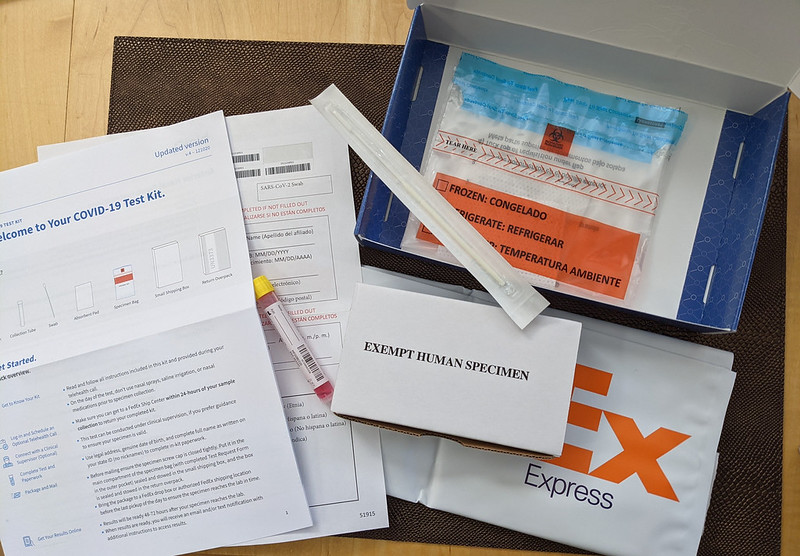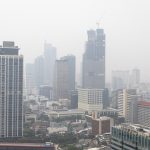
With the omicron variant rapidly spreading in the U.S. and concerns increasing about a surge in the coming weeks, infectious disease experts are urging Americans to take at-home COVID-19 tests before allowing people from different households to share space indoors without masks.
While the incubation period of the first strain of SARS-CoV-2 ranged from two to 14 days (on average it was 5.6 days) from infection to symptoms, the omicron variant’s incubation from infection to symptoms has been as little as two to three days, suggesting that people need to test themselves more often to determine whether they’re contagious. (The delta variant’s incubation period averages about four days.)
“With that very short incubation period — that zero to three-day incubation period — you really need to be testing at least every day now,” said Celine R. Gounder, M.D., clinical assistant professor of infectious diseases at NYU Langone Health, during a Dec. 15 webcast. “So, [take a test] every morning over the holidays before you hang out with family and friends to make sure that you’re relatively safer to be spending time with them without a mask.”
The problem is that rapid tests have been hard to come by, mostly because of a combination of supply chain issues, cost (rapid test prices can range from $14 to $24 and more), and the inability of the approximately dozen rapid test manufacturers to keep up with demand and get them to pharmacies and retailers, as explained by the Kaiser Family Foundation and news organizations such as ProPublica, Vox and Yahoo News.
The Biden administration has pledged to invest $1 billion to increase the number of rapid tests as well as reimburse people for rapid tests through their health insurance. The administration has also announced plans to mail free COVID-19 test kits to those who want them, starting in January. While these efforts may increase the availability of tests and reduce prices by early 2022, they won’t help alleviate testing concerns during the upcoming holiday season.
“It is unacceptable that people have to decide whether they’re going to put food on their table for Christmas or have a risk-free COVID-19 event,” Katelyn K. Jetelina, an epidemiologist at the University of Texas Health Science Center said during a Dec. 17 AHCJ webcast. “We’ll start reimbursing COVID-19 tests through insurers, but this largely leaves out the under- and uninsured who really need something like this.”
On Dec. 19, I purchased rapid tests to be delivered this week to my home through home healthcare firm, Carewell. Two tests were priced at about $24. Another way to receive a quick test is to search for same-day COVID testing sites near you. In Washington, D.C., for example, CVS pharmacy advertised no-cost quick tests with results within 24 hours. The city itself also offers free testing, though results might take several days.
A good story for reporters is the health equity issue in testing. The rapid tests are simply too expensive for many families to afford.
Meanwhile, the Biden administration has warned testing companies and laboratories that the nation may need to conduct from 3 million to 5 million COVID-19 laboratory and at-home tests per day by the end of January, up from the current figure of about 1.6 million, Politico reported.
A quick reporters guide on COVID-19 testing
- There are diagnostic and antibody tests. Diagnostic tests look for whether a person is currently infected with COVID-19, while an antibody test determines whether a person was infected in the past. Here’s a Food and Drug Administration-produced video on understanding COVID-19 testing.
- There are two kinds of diagnostic tests, a molecular test and an antigen test. Each detects a different part of the SARS-CoV-2 virus. Molecular tests search for pieces of the virus’s genetic material. This is done though a technique called polymerase chain reaction (PCR) and are highly accurate but usually take hours or days to provide results. Antigen tests search for viral proteins that cause the body to produce antibodies for specific pathogens, like SARS-CoV-2. They are less accurate but provide results, usually within 15 minutes.
- Diagnostic tests usually involve taking a sample from either a nasal swab or saliva and sending it to a lab. COVID-19 tests can be found through local public health departments, their health care providers, public libraries and community health centers.
- The FDA has also approved at-home molecular and antigen tests.
- Rapid antigen tests (a little over a dozen for home users are approved by the FDA) are designed to search for SARS-CoV-2 antigens and can be completed in 15 minutes. They are less accurate than PCR tests and can miss a COVID-19 infection in its earliest days. PCR tests are more accurate, but they require more specialized laboratory equipment and can take 24 hours or longer to get results. Most PCR tests are done in labs, but two companies produce at-home molecular tests that provide faster results. However, they are expensive, costing $75 to more than $150 a test. Here’s a guide for how to use rapid tests.
For more on COVID-19 testing and the latest omicron variant news, check out AHCJ’s Dec. 17 webinar: “Omicron, future variants and reporting on COVID-19 in 2022.”




